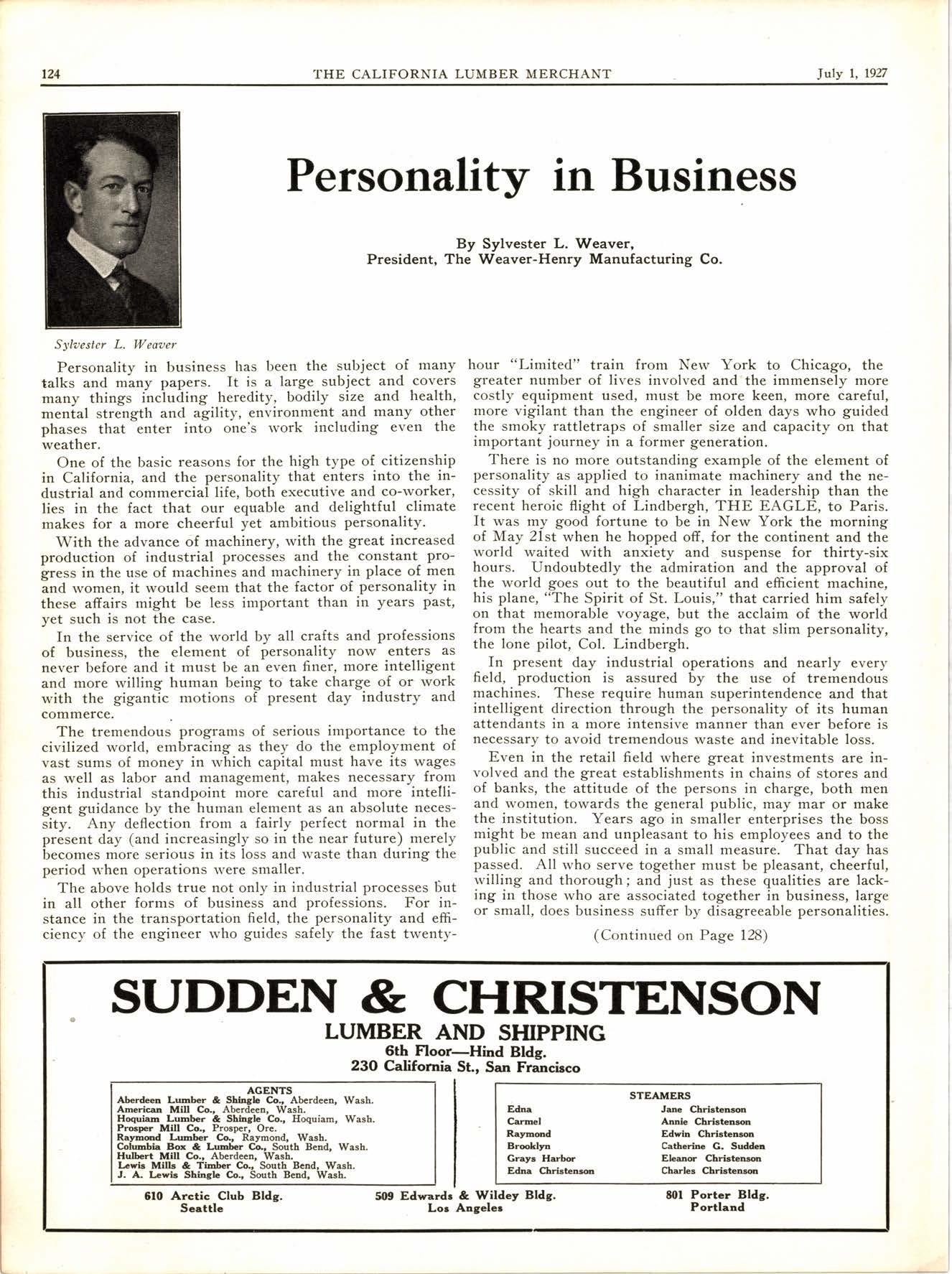
3 minute read
Brittg your home financittg problems
to the "United States"
Our secretary, Mr. Ftank M. Vise, who for years was closely associated with the lumber business, is especially equipped to handle your problems and give you expert advice and senrice"
Ground Floor-Roosevelt Bldg.
Notheast Corner 7th and Flower Streetr ' Loo Angcler TRinity 9121 Completc
Northwest, and geneially among the small producers throughout the country, resulting in clashing interests, lack of cohesion within the industrr and the near impossibility of arguing successfully a community of interests'-destructive competition between species, between.regions, and even, as in the Pacific Northwest, profit-destroy- ing c<irnpetition between producers, big and small, of the same species in the same region-variability of lumber and near impossi- bility of its standardization-amazing number of items produced and complexity of markets-lack of market knowledge among producers-non-develppment of an adequate marketing technique with the result that lumber is sold mostly through intermediaries whose interests may not and frequently do not run parallel with those of the producers-an industry composed of individualists-an industry which, by and large, has done no advertising and no trade promotion- al work,
"The- Douglas Fir industry in particular is unquestionably in a state _of overproduction, which, however, could be materialty modi- fied if the lumber were properly marketed-emphasis has been and still is on the production side-no leadership-apparently insufiicient financial reserves to permit of the flexibility in operations which a close adjustment of production to demand would require-onty a few of the very largest producers have selling organizations, distributing yards, etc -generally a hodge-podge of grades, sizes and methods of preparation.

-- "Douglas- Fir, an excellent ltr,mber as lumber, very nearly the best, if not the best, general utility of all-purpose lumber in the United States, and with only one real competitor, that is, Yellow Pine, which has reached its peak in production and promises to fall off so rapidty in supply that, competent authorities estimate that within the nexl ten years it will all be required in the South.
"Douglas l.'ir, the last great stand of virgin softwood timber in th€ United States capable of being manufactured into a high quality, all-purpose timber-no threat of serious competition from the coming-into-development of new areas and species within the United States.
"At present and for the past three years a decidedly unprofitable industry-throughout its history as an important industiy it has been relatively u_nprofitable. _This general lack of profits due mainly perhaps to conditions already enumerated, but partly also to thi fact that Douglas Fir producers have crowded the future somewhat and.opened lp a vast.new timber region and created a great, new lumber supply somewhat in advance of its time.
"Douglas Fir lumber has been introduced and its qualities are now fairly well-known to the important lumber-consuming regions of the
United States and to foreign markets as well. No matter how donc and at what cost to the industry this difficult, costly, long-time job lies is an indictment of the industry by an independent and unbiased source.
In giving consideration to the broader aspects of the economic situation and what can be accomplished through collective and cooperative effort, or in the absence of it, by a consolidation of sufficient production to stabilize the industry, it is necessary to consider what economies could be created, what improvements could be made in the market, and also the effect of any expansion in demand or value of the production by reason thereof. The question is, Would such an expansion tend to increase production? I think the analysis made from the point of view of expansion in production from present units, following the earthquake in 1923, provides that answer, Naturally there would be no immediate incentive to provide new facilites for production, in face of the present unprofitable conditions in the industry. It would, at least, require a full year of profitable business, to cause the desire to provide such new facilities to germinate. From our own experience, it took us practically four years to provide our present production at Vernonia. It requires a close, comptete study of the timber situation to select the tracts which it is desirable to develop. There is such a great variation in quality of timber and in logging conditions, great care rnust be exercised. It required a year of close study of plans and methods of preparation, kilndrying experiments, and other matters, to reach a conclusion as to the character of plant we should develop. It also required a year to build the plant, and six or eight months to bring it into efficient op- eration. So, the immediate effect upon production will not be great. The provision of additional facilities for present operating units, so as to provide greater production, would not, in our judgment, be a great factor in the situation. Mills might be able to start a night run, or additional runs, but in order to do so they would have to provide facilities to produce logs; provide yarding, drying, planing mill, and shipping facilities; provide housing for their employees, and other facilities. We figured in our operations that if we should decide to go to a ten-hour operation, instead of eight hours, it would require capital expenditures of $4,250,000, to provide the additional caparity and timber to support it; $1,250,0O0 would be required for facilities and $3,000,000 in timber to justify the expenditures for facilities. When confronted with such a heavy capital expenditure, naturally there is no great incentive to make the installation, as the market might be gone before the facilities could be provided. There-
(Continued on Page 46)










